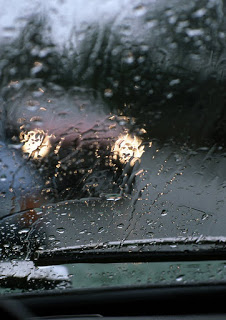
Driver Safety Tips for Spring Storms
May 17, 2010
After the storms last month, I had hoped the age old adage “April showers brings May flowers” would ring true this spring. However, that does need to be the case. Temperatures are dropping and more rain is on its way this way. Although the rain forecast for this week is not supposed to bring storms like the ones New Yorkers experienced last month, it’s still important to review safety techniques for driving in the rain.
First and foremost drivers should remain alert when driving in rain. Rain and wet roadways increase driving risks by lowering driver visibility and making it more difficult to stop quickly. Additionally, drivers must always be on the lookout for debris in the roadways. Debris is especially common when heavy rain is accompanied by high winds. Motorists should always be on the lookout for downed trees and fallen power lines after a windy rain storm.
In addition to remaining alert and keeping an eye out for debris and downed power lines, the following tips will help ensure your safety through any storms this spring and summer bring to your area.
- Don’t speed on wet roads. Drive the speed limit or slower, if need be.Check your windshield wiper blades and tires regularly to ensure your vehicle is equipped to properly handle the effects of inclement spring and summer weather.
- Turn your lights on when driving in the rain. This will make it easier for you to see and for oncoming traffic to see you.
- Be aware of the drivers around you. Treat a non-functioning traffic signal as a 4-way stop sign.
- Don’t attempt to drive through standing water. Many times water appears shallow enough to drive through but standing water can hide dips in the road. So, it’s best to play it safe and turn around and find a different route. Six inches of water will reach the bottom of most passenger cars; this can result in a loss of control or stalling of your vehicle.
- If your visibility becomes heavily impaired it is best to pull over onto a safe spot on the shoulder until the rain eases. Make sure to turn on your flashers once you’ve pulled onto the shoulder. This will make it easier for other drivers to see you.
- Always be aware of the vehicles around you. In addition to impairing driver visibility, high winds can make it difficult for drivers of trucks, SUVs and other large vehicles to control their vehicles.
- During a lightning storm remain in your vehicle. Your vehicle will provide better insulation and protection against a possible lighting strike than being out in the open. However, even while you’re in your car, you avoid contact with any metal surfaces that can conduct electricity.
